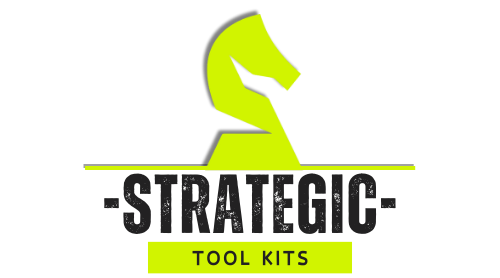A Level 10 Meeting is a structured weekly meeting designed within the Entrepreneurial Operating System (EOS) framework to keep leadership teams aligned, accountable, and focused on results.
Unlike traditional meetings that often drift into unproductive conversations, the Level 10 format provides a 90-minute agenda that prioritizes solving issues, reviewing progress, and ensuring every leader leaves with clear next steps.
The term “Level 10” comes from the idea that participants should rate the effectiveness of the meeting at the end, to consistently achieve a score of 10 out of 10.
According to EOS Worldwide (2024), businesses that adopt the Level 10 Meeting structure report up to 42% higher productivity in leadership teams and stronger alignment across departments.
In simple terms, it’s not just another meeting; it’s a discipline that ensures a company’s leadership stays laser-focused on priorities week after week.
EOS in Brief: The Operating System for Business
The Entrepreneurial Operating System (EOS) is a set of tools and practices developed by Gino Wickman, outlined in his book Traction.
It’s designed for entrepreneurial companies that want a simple, practical way to run their business more effectively. EOS helps companies clarify their vision, establish accountability, and achieve traction.
Within EOS, the Level 10 Meeting is the central rhythm. It’s the heartbeat of the system, ensuring that leadership teams align weekly on the business’s vision and execution. Without it, EOS tends to fail because it’s the tool that keeps everything else on track.
The Structure of a Level 10 Meeting
The Level 10 Meeting is always 90 minutes long, following a consistent agenda. This consistency is what makes it so effective.
Time Allocation
Agenda Item
Purpose
5 minutes
Segue
Personal & professional check-in, set positive tone
5 minutes
Scorecard Review
Review 5–15 key weekly metrics that indicate company health
5 minutes
Rock Review
Check status of quarterly priorities (“Rocks”)
5 minutes
Customer/Employee Headlines
Share key wins, challenges, or updates
5 minutes
To-Do List Review
Review last week’s action items, confirm completion
60 minutes
IDS (Identify, Discuss, Solve) Issues
Solve the most pressing 3–7 issues affecting the company
5 minutes
Conclude & Rate Meeting
Recap action items, confirm cascading messages, rate meeting (1–10)
This simple yet disciplined agenda keeps meetings on track and ensures the bulk of the time is spent solving problems, not just talking about them.
Why Level 10 Meetings Work

Predictability and Discipline
Because the agenda, cadence, and timeboxes never change, people show up prepared. That alone kills 80% of meeting waste.
A recurring same-day, same-time slot creates a habit loop; a single facilitator keeps the flow; and a simple “parking lot” catches off-topic items without derailing the room.
Timeboxes matter: five minutes really is five minutes. When people know exactly where their update fits and how long it should take, grandstanding disappears and decisions speed up.
Focus on Metrics
Opening with the scorecard forces fact-based conversation. Keep it to 5–15 leading indicators (not just lagging results). For sales, that might be qualified demos booked; for ops, on-time shipments; for finance, DSO (days sales outstanding).
Each metric should have an owner, a weekly target, and a clear red/yellow/green threshold. Trends over 4–8 weeks matter more than a single week’s patterns trigger IDS, not anecdotes.
Accountability Through Rocks and To-Dos
View this post on Instagram
Rocks (quarterly priorities) prevent “urgent” from suffocating “important.” In the L10, each Rock gets a fast status: on track / off track, no monologues. To-dos are the execution engine: binary, one owner, one-week horizon.
Great teams hit 90%+ to-do completion weekly; anything less is a signal, not a scolding. If a Rock is off, convert the obstacle into a specific IDS issue and walk out with a new to-do that moves the Rock forward.
Problem-Solving with IDS
The 60-minute IDS block is the heart of the meeting. First, identify the real problem (use “5 Whys” or “What’s the constraint?”). Second, discuss to clarify, briefly, with evidence, not opinions.
Third, solve by agreeing on one or two concrete actions with owners and due dates. Prioritize the top 3–7 issues; finish them before touching the rest. Avoid status updates disguised as issues; if there’s no decision or action at the end, it wasn’t an IDS topic.
Continuous Improvement
You close by recapping to-dos, confirming any messages that must cascade to teams, and rating the meeting 1–10. Scores below 8 trigger a 60-second meta-conversation: “What would have made this a 10?”
Small adjustments, tighter timekeeping, better pre-reads, fewer metrics, compound over weeks. Track the rolling average of your meeting score; it’s an early signal of leadership health.
Example in Practice

Imagine a mid-sized manufacturing company implementing EOS.
- Scorecard Review: Reveals late shipments rising for the second week in a row.
- Rock Review: Operations leader reports the “improve shipping logistics” Rock is off track.
- Headlines: Sales director notes two major clients are unhappy.
- IDS Session: The team prioritizes this as the #1 issue. They identify warehouse bottlenecks, discuss solutions, and decide to add a temporary logistics partner. An action item is assigned with a one-week deadline.
Instead of endless debate, the team leaves with a clear fix and accountability.
Benefits of Level 10 Meetings
Benefit
Impact on Business Leaders
Efficiency
Meetings capped at 90 minutes, reducing wasted time
Alignment
Keeps leadership focused on the same priorities
Accountability
Clear follow-ups on every issue and task
Problem-Solving Culture
Builds discipline of tackling root causes, not symptoms
Transparency
Metrics and Rocks are reviewed openly, reducing silos
Employee Engagement (Indirect)
When leadership is aligned, communication cascades more clearly to teams
Pitfalls to Avoid When Running Level 10s
- Inconsistency: Skipping weeks or stretching past 90 minutes undermines effectiveness.
- Too Many Metrics: Scorecards should focus only on vital numbers, not be overwhelmed with data.
- Avoiding Hard Issues: Teams must resist the urge to skip tough conversations during IDS.
- Poor Follow-Through: To-dos should be simple, specific, and trackable. Without follow-through, accountability collapses.
Real-World Example: EOS in Action
@arealestateguy The Entrepreneurial Operating System (EOS) can be a very powerful platform for business growth. Understanding how to effectively run and scale a company can be overwhelming without the right structure in place. Laura breaks down the 6 key components of EOS. #RealEstateTips #leadgeneration #eos #leadership #leadershipdevelopment #businessowner #businessgrowth ♬ original sound – arealestateguy
A Chicago-based marketing agency with 40 employees adopted EOS after years of disorganized meetings. Before EOS, leadership meetings dragged on for two hours with no clear outcomes.
After switching to the Level 10 format, leaders reported a 30% increase in on-time project delivery within six months. The IDS structure helped the team resolve bottlenecks that had lingered for months.
Conclusion
Level 10 Meetings are not just about better meetings; they are about better leadership discipline. By combining structure, accountability, and problem-solving, they ensure leadership teams stay aligned on vision and execution.
For companies running on EOS, the Level 10 is the glue that holds the system together.
In a world where executives spend up to 23 hours per week in meetings, adopting a proven structure like the Level 10 can be the difference between wasted time and real traction.

